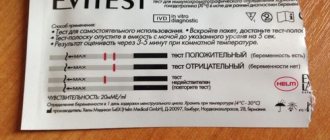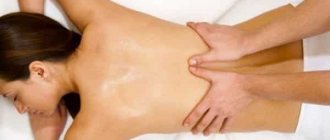Critical days in the life of many women can become an obstacle to the treatment and prevention of various diseases. A similar rule also applies to physiotherapeutic techniques, such as magnetic therapy for menstruation. The hormonal surge that accompanies menstruation is most often exacerbated by chemical and biological effects on the female body. However, physical interference in the physiology of a representative of the fair sex can cause various health problems.
The use of magnetic therapy in the treatment of gynecological problems
Magnetic therapy is often used in gynecology clinics. However, it is also used in other areas. The technique increases the body's protective functions. Helps cope with painful syndrome. Magnetic therapy in gynecology effectively copes with the inflammatory process.
Often prescribed for endometritis. Used as an auxiliary method. After the first session, positive dynamics are noted. Sleep improves and temperature is restored. Blood flow is normalized. Magnetic therapy refers to physiotherapeutic procedures.
Carried out only if indicated.
Treatment of gynecological pathologies can be carried out using magnetic therapy
Useful video
For information about treatment using magnetic therapy, watch the video:
The spectrum of action of the south pole of a healing magnet on the body
South Pole most often specializes in anti-inflammatory and antibacterial effects. Various injuries, purulent wounds and inflammatory processes in tissues are perfectly amenable to such treatment. Magnetotherapy using the south pole perfectly complements other specific techniques.
Doctors note the successful use of this method to prevent bleeding, since the magnet stops it well, influencing the coagulation system. In addition, the south pole is an excellent anesthetic and significantly reduces pain from wounds and injuries.
It is recommended to use the effect when carrying out rejuvenation and weight loss procedures in patients. In this case, magnetic metals destroy fat deposits in the female body, improve skin elasticity, and prevent tissue dehydration.
If the North Pole is used for treatment
The north pole of a magnet, when used in the treatment of a woman, has a more general effect. There is an improvement in the functioning of the blood vessels of the heart and brain, a decrease in fatigue and an increase in performance. When used in this way, this metal most often acts as a stimulant for the patient’s immune system, that is, it promotes the growth of all cells in a woman.
It is for this reason that this method of exposure is not recommended for use in inflammatory processes, as it can provoke the growth of pathogenic bacteria. Magnetic therapy during menstruation with the participation of the north pole in the process often provokes bleeding in patients.
Electrophoresis and magnetic therapy during menstruation
Physiotherapy is widely used in all branches of medicine. It is effective during the period of rehabilitation after illness, helping to speed up the process of restoring normal functioning of the body. Gynecologists prescribe useful physiotherapy sessions for patients for therapeutic and preventive purposes.
Women are interested in whether it is possible to do physiotherapy during menstruation. This question can be accurately answered by the attending physician who assesses the condition of the body. This method of treatment will not disrupt the course of the menstrual cycle, but the doctor must be sure that there are no contraindications so as not to cause complications.
Contraindications to physical therapy
Physiotherapy is often used in gynecology to speed up the process of getting rid of a certain disease and restoring the body. Despite many positive reviews and the experience of leading doctors, there is a list of contraindications for the procedure.
- The presence of a malignant tumor. In this case, the place of its localization does not matter.
- Heart disease: angina pectoris, hypertension. Therapy is contraindicated if the woman has a pacemaker.
- Thrombosis.
- Mental illnesses in the acute stage.
- Skin diseases: dermatitis, eczema. Damage to the skin in areas of direct impact of the devices.
- Acute inflammatory processes.
- Fever.
- Individual intolerance to the drugs used, electric current.
Pregnancy is not a complete contraindication for physiotherapy. The drug is prescribed by the doctor, choosing a remedy that will not harm the developing child. Also, not all doctors consider menstruation a contraindication to prescribed therapy. Each case requires an individual approach.
Electrophoresis and menstruation
The use of electrophoresis during menstruation is approved by many doctors. They do not consider critical days to be a clear contraindication for procedures.
At the same time, there is also the opposite opinion, according to which electrophoresis has a negative effect on the condition of the body. Increased uterine bleeding cannot be ruled out.
Procedures performed using electric current can lead to hormonal imbalances.
Before prescribing therapy during menstruation, the doctor examines the patient and makes the necessary diagnostics. This allows you to assess the general condition of the body. Treatment has clear limitations for this period.
If electrophoresis is performed during menstruation, the procedures exclude the use of vaginal sensors and electrodes.
The gynecologist can consult with a physiotherapist, rescheduling a course of therapy or selecting other methods that do not have a negative effect on the body.
Among all treatment methods, physiotherapy helps well with endometritis. The doctor selects special medications aimed at alleviating the woman’s condition.
Electrophoresis with the addition of potassium iodide and calcium chloride helps well. Physiotherapeutic procedures do not stop during menstruation. Therapy is contraindicated in case of heavy discharge.
Possible side effects are increased pain.
When asked about choosing a treatment method, the doctor will determine whether physiotherapy can be done during menstrual periods. If possible, they are postponed until the end of menstruation.
Magnetic therapy and menstruation
The influence of the magnetic field has a beneficial effect on the woman’s body. This method of treatment has proven effective in the fight against inflammatory diseases, adhesions, and infertility.
The device has special attachments that allow you to influence not only externally, but also internally. Control occurs using a computer; the physiotherapist alternates polarities during the session.
The technique is prescribed during exacerbation of endometritis, colpitis, endocervitis. The magnetic effect is complemented by conservative treatment, and the woman feels relief much faster.
At the same time, the period of taking medications is significantly reduced, the body does not experience greater stress, and recovers faster.
As a rule, the technique is not used during menstruation. The risk of bleeding increases. Treatment begins after the end of the critical days. Timely administration of therapy helps a woman get rid of many problems and restore the health of the reproductive system. Magnetic therapy helps a woman bear a healthy baby.
Properly selected physical procedures speed up the healing process and a woman’s recovery after illness. Therapeutic electrophoresis, magnetic therapy in addition to conservative techniques help preserve women's health, and many will be able to realize their cherished dream of becoming a mother.
Source: https://TvoiMesyachnye.ru/zaprety/fizioprotsedury-v-kriticheskie-dni
What is magnetic therapy
For many centuries, scientists have monitored the effect of the magnetic field on the human body. It was believed that the use of this technique helps restore vitality, improves the functioning of the immune system, and increases biological protection in patients. Such famous ancient healers as Hippocrates, Paracelsus, Franz Mesmer and others worked with magnets.
Nowadays, treatment with magnets has not lost its relevance. Magnetotherapy is a recognized method of therapeutic intervention in many countries and is successfully included in the main list of physiotherapeutic methods of treatment and prevention.
Modern medicine uses the healing power of metals with magnetic properties in two ways. Most often, specialists prefer to use local magnetic therapy. In this case, the effect of the field concentrated between the positive and negative poles has a narrow direction. With this use of a magnet, the object of treatment becomes a specific organ or part of the human body.
But basically the therapeutic effect of the magnetic field extends to the entire body of the patient. Experts have found that such therapy can cause different effects in sick women, so the question of whether magnetic therapy can be used during menstruation remains quite controversial.
It should be clearly understood that since a magnet has two different poles, its effect on the human body will differ.
Is magnetic therapy safe during menstruation, features of its implementation and nuances
Critical days in the life of many women can become an obstacle to the treatment and prevention of various diseases. A similar rule also applies to physiotherapeutic techniques, such as magnetic therapy for menstruation.
The hormonal surge that accompanies menstruation is most often exacerbated by chemical and biological effects on the female body.
However, physical interference in the physiology of a representative of the fair sex can cause various health problems.
What is magnetic therapy
For many centuries, scientists have monitored the effect of the magnetic field on the human body. It was believed that the use of this technique helps restore vitality, improves the functioning of the immune system, and increases biological protection in patients. Such famous ancient healers as Hippocrates, Paracelsus, Franz Mesmer and others worked with magnets.
Nowadays, treatment with magnets has not lost its relevance. Magnetotherapy is a recognized method of therapeutic intervention in many countries and is successfully included in the main list of physiotherapeutic methods of treatment and prevention.
Modern medicine uses the healing power of metals with magnetic properties in two ways. Most often, specialists prefer to use local magnetic therapy.
In this case, the effect of the field concentrated between the positive and negative poles has a narrow direction.
With this use of a magnet, the object of treatment becomes a specific organ or part of the human body.
It should be clearly understood that since a magnet has two different poles, its effect on the human body will differ.
For information about treatment using magnetic therapy, watch the video:
The spectrum of action of the south pole of a healing magnet on the body
South Pole most often specializes in anti-inflammatory and antibacterial effects. Various injuries, purulent wounds and inflammatory processes in tissues are perfectly amenable to such treatment. Magnetotherapy using the south pole perfectly complements other specific techniques.
Doctors note the successful use of this method to prevent bleeding, since the magnet stops it well, influencing the coagulation system. In addition, the south pole is an excellent anesthetic and significantly reduces pain from wounds and injuries.
If the North Pole is used for treatment
The north pole of a magnet, when used in the treatment of a woman, has a more general effect. There is an improvement in the functioning of the blood vessels of the heart and brain, a decrease in fatigue and an increase in performance. When used in this way, this metal most often acts as a stimulant for the patient’s immune system, that is, it promotes the growth of all cells in a woman.
It is for this reason that this method of exposure is not recommended for use in inflammatory processes, as it can provoke the growth of pathogenic bacteria. Magnetic therapy during menstruation with the participation of the north pole in the process often provokes bleeding in patients.
Basic methods of magnetic therapy and equipment used
Unlike the United States, where magnetic therapy is not legalized and its use for the treatment of various pathologies may entail penalties, in the Russian Federation, Ukraine and other countries of the former USSR this method of influencing the human body has become widespread. For the treatment and prevention of various diseases, specialists most often use stationary devices, which are located in physiotherapy departments and are distinguished by their high power and wide spectrum of action.
Modern clinics are equipped with devices that combine a computer device with a display and a large set of attachments, solenoids, magnetic belts and other local emitters.
The computer allows you to automatically set various treatment programs, and additional emitter devices allow specialists to influence either the woman’s body as a whole, or individual parts of the body and organs.
Typically, the patient is in a lying position, and with the help of sensors attached to his body, a magnetic effect is exerted on tissues and cells. The depth of intervention of the device can reach 4 - 6 cm. Tactile or pain sensation is usually absent.
If you need to carry out magnetic therapy on a specific area of the body, you can use portable devices for treatment. The modern medical industry offers sufficient choice for outpatient or even independent home use.
The most famous and widespread device is “Magofon - 01”. This magnetic device produces a field that has anti-inflammatory, decongestant, soothing and analgesic effects.
This healing magnet has proven itself to be useful in everyday care for injuries, diseases of the musculoskeletal system, cardiovascular pathology, neuroses and neuritis.
These medical devices are developed based on the action of a pulsed magnetic field, the distinctive feature of which is a constant change in the poles. This quality allows you to reduce the various negative effects of the south pole magnet on a woman’s body and emphasize the positive aspects of the technique.
Many experts recommend using “Alimp-1” for the treatment of gynecological diseases, however, even in the case of using this particular specialized device, it is impossible to answer unequivocally whether magnetic therapy can be done during menstruation.
Treatment of gynecological diseases using magnetic therapy
Modern gynecologists recommend the widespread use of physiotherapeutic techniques for the treatment of most gynecological diseases. Most often, magnets are used to combat inflammatory processes in the female genital area, infertility and adhesions.
As mentioned above, the Alimp-1 device has a number of special attachments that allow magnetic therapy to be carried out not only through the anterior abdominal wall, but also directly deep into the female body. This makes it possible to create the necessary magnetic field contour, and various computer programs facilitate alternating polarity during the procedure.
A similar technique is used even in the acute period of various colpitis, endometritis and endocervitis. This tactic of external influence combines well with traditional methods of treating female diseases and can significantly reduce the time required to use medications.
However, when carrying out therapy for the female genital area, the question again arises of whether to do magnetic therapy during menstruation. Most gynecologists believe that due to the risk of bleeding, it is better to postpone the use of this treatment method until after menstruation.
If magnetic therapy is recommended for a woman during pregnancy, then in this case there is no question of using this method during menstruation. Magnet treatment will help expectant mothers successfully bear and give birth to a healthy child
We recommend reading the article about mammography during menstruation. From it you will learn about the timing of the examination, the methodology and recommended days of the menstrual cycle for diagnosis.
Physiotherapy during menstruation: is it possible or not?
Physiotherapeutic methods are widely used in various branches of medicine, one of which is gynecology. They involve heat, cold, radiation and other factors. Often women ask the question: is it possible to do electrophoresis during menstruation or other physiotherapy procedures.
Physiotherapy has long taken a strong place in all branches of medicine. Its therapeutic effect is based on the activation of the body's defenses. However, despite the wide range of indications for its use, it is not used as an independent type of therapy.
Indications and contraindications
The basic rule of physiotherapeutic treatment is its use in combination with traditional therapy. Treatment with physical factors at the time of exacerbation of the disease is not allowed.
First, the cause of inflammation is eliminated and the symptoms of the disease are relieved. Physiotherapy helps speed up the healing process at the final stage of treatment.
It is often used during periods of remission of chronic diseases to reduce the severity of exacerbations and reduce the frequency of relapses.
General contraindications to physical therapy are the following conditions:
- fever;
- purulent inflammation;
- malignant formations;
- leukemia;
- decreased blood clotting;
- taking medications that thin the blood;
- hypertonic disease;
- heart disease;
- installed pacemaker;
- thrombosis;
- tuberculosis in the active stage;
- acute disorders of the nervous system;
- dermatological diseases.
Treatment cannot be carried out with any of the methods if there are specific contraindications. Otherwise, there is a risk of complications.
Types of physiotherapy
In gynecological practice, doctors often use electrophoresis, magnetic therapy, laser treatment, UHF and EHF (use of electromagnetic fields).
Electrophoresis
One of the popular methods in gynecology is treatment with electric current. The technique is used quite often due to a number of advantages of such therapy. It allows drugs to be administered into the body in minimal therapeutic doses. The essence of electrophoresis is the entry of medicinal substances into the body under the influence of electric current.
Entry through the skin reduces the risk of developing systemic side effects from medications. A depot with a high concentration of the medicinal substance is formed at the site where the pads are applied.
Even with impaired blood flow at the site of inflammation, the active substance penetrates through the tissue. Bypassing the intestinal tract, the drug is not exposed to enzymes and retains its properties until it penetrates the site of pathology.
Additionally, low-frequency pulses affect humoral immunity and enhance the neuro-reflex effect.
The procedure is painless, the patient feels a slight tingling of the skin. A wide range of medications are administered with electrophoresis (Eufillin, Papaverine, Magnesium sulfate, Potassium iodide). The dosage and duration of treatment are determined individually.
Menstruation is not an absolute contraindication to physiotherapy. Normally, bleeding is not accompanied by purulent discharge and there is no contact of the electrodes with the open wound surface. The degree of penetration of drugs does not exceed 1 cm, so there is no increase in uterine bleeding.
The cause of pain during menstruation is chronic processes in the pelvic organs. Women complain of pain in the lower spine and lower back. The most common pathologies are endometriosis, adhesive disease, erosive changes in the cervix, malformations and curvature of the uterus.
Features of application
Physiotherapy during menstruation can lead to increased pain, but is not its root cause. Electrophoresis is used to relieve painful periods. To do this, pads soaked in novocaine are placed on the lower abdomen. In this case, the course will require six to eight sessions. Physiotherapy methods:
- bath method;
- interstitial;
- galvanophoresis (used more often than others).
When treating pathological conditions in gynecology, electrophoresis is prescribed on the fifth to seventh day of the menstrual cycle, that is, about a week after the start of bleeding. The number of sessions is on average 10 procedures. When undergoing a course of therapy, you cannot take breaks; the medicine must act on the site of inflammation constantly, despite the creation of a depot in the tissues.
However, in people with weak blood vessels and a tendency to bleed, electrophoresis may result in increased blood volume release. Bleeding will become more intense, and increased vascular spasm will provoke the occurrence of pain. In some cases, this can lead to a longer period.
Magnetotherapy
Indications for magnetic therapy in gynecology include most diseases of the female reproductive system, including infertility.
The treatment device allows the session to be carried out both externally through the anterior abdominal wall and inside the cavity. Depending on the pole, the magnet is used to treat various diseases.
Polarity alternation is carried out using a computer program.
Magnetotherapy during menstruation significantly reduces treatment time when using traditional therapy. The technique has a list of contraindications, including blood clotting disorders. During uterine bleeding, under the influence of sex hormones, a decrease in coagulation occurs. Therefore, magnetic therapy can enhance its manifestations.
Laser therapy
The laser is used for a number of inflammatory diseases (oophoritis, vaginitis, endometritis, inflammation of the appendages). It is used after surgery on the uterus, for bleeding, and infertility.
The advantage of this treatment is the direction of action, the choice of wavelength depending on the indications. With its help, you can directly influence the lesion, projection on the skin, and acupuncture points.
Under the influence of the laser, the severity of pain is relieved, blood circulation is normalized, the recovery process is faster, immunity is increased and the process of inflammation is eliminated. Laser treatment is not performed for gynecological pathologies in the acute stage, ovarian cysts, and extensive endometriosis. Benefits of laser therapy:
- safety of the method;
- no contraindications;
- painlessness;
- possibility of alternation with other types of physiotherapy;
- can be used for both treatment and prevention of diseases.
Laser treatment is carried out in courses that can be carried out once or several times a month. In gynecology, ultra-high and low frequency lasers are used.
UHF therapy
Exposure to ultra-high frequency current provides a warming effect, which is used to treat adnexitis and salpingitis. The technique is especially often used to treat diseases in the chronic stage.
UHF promotes blood flow to the site of inflammation and has an analgesic effect. In addition, the treatment process stimulates cells of the immune system. During therapy, the process of tissue regeneration is accelerated and local immunity is activated.
Under the influence of electromagnetic fields, the following changes occur in the body:
- swelling is eliminated;
- peripheral and central blood circulation is stimulated;
- the pain threshold decreases;
- the process of inflammation is stopped.
The peculiarity of UHF therapy is to limit its use to twice a year.
The effectiveness of the procedures is influenced by the duration of treatment, the severity of the disease, the combination of therapy methods, and the individual reaction of the patient.
Before undergoing any procedures during menstruation, you should consult a physiotherapist. A woman’s well-being these days also plays a big role. In the absence of menstruation or their delay, it is first necessary to eliminate the cause of the pathology, then begin a course of treatment. The best time for physical therapy is the first half of the cycle.
Source: https://phisioterapia.ru/o-fzt/mozhno-li-ili-delat-fizioterapiu-pri-mesyachnyh/










